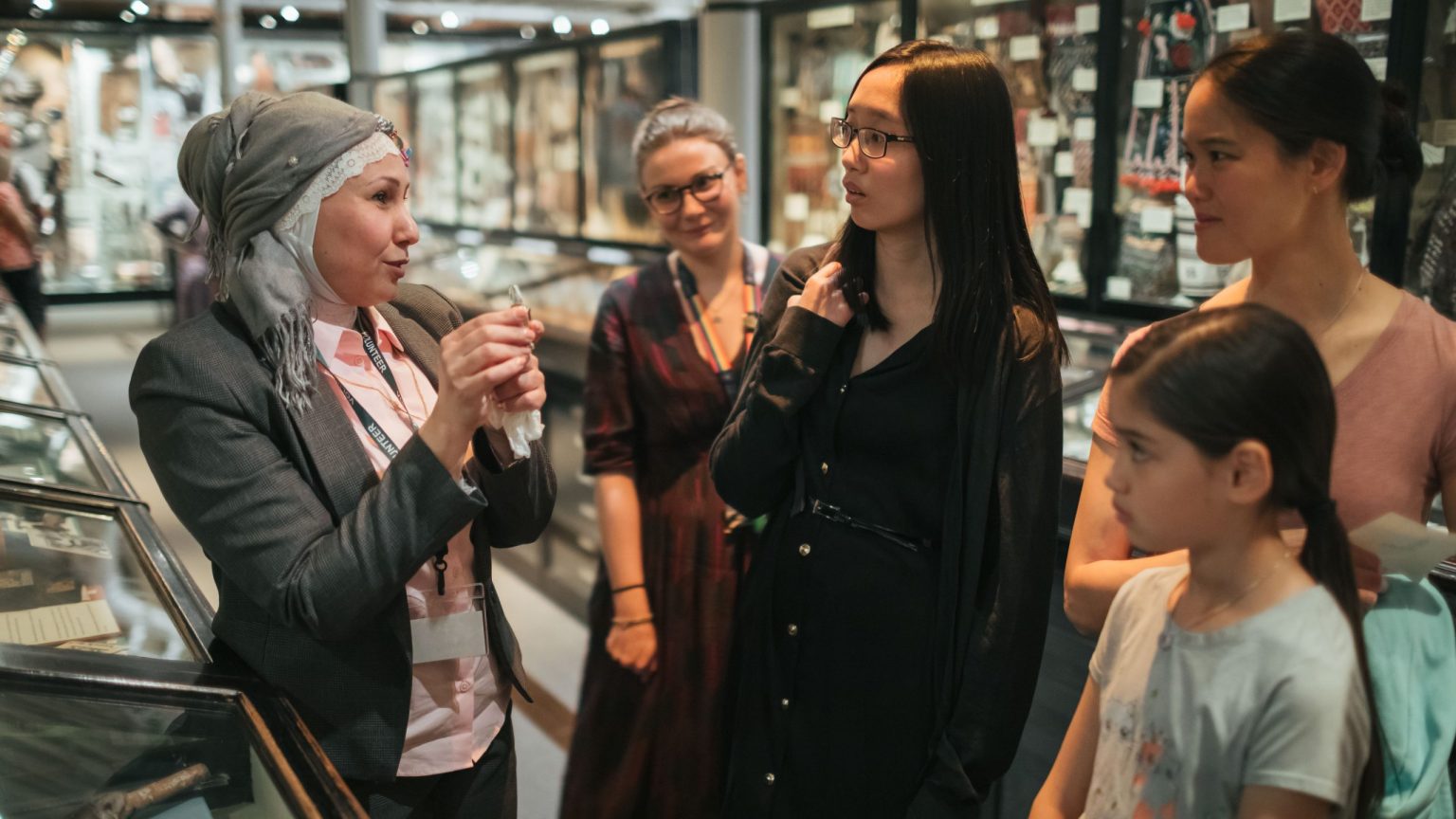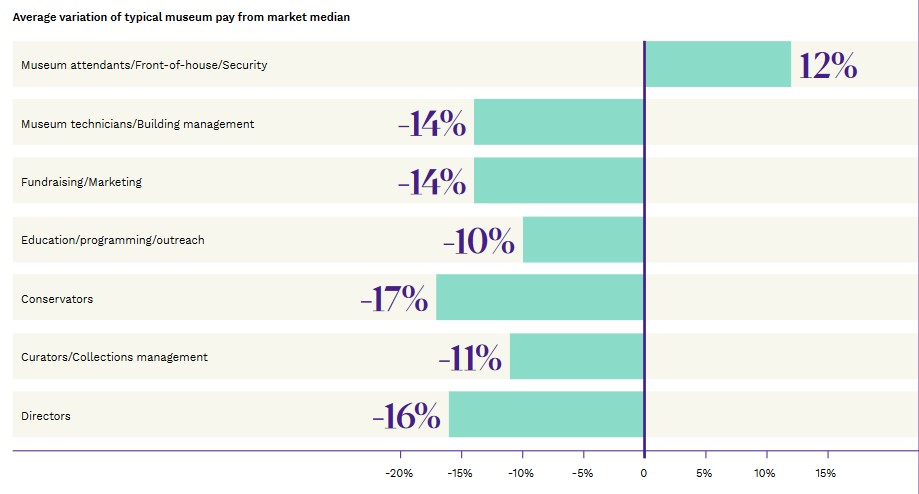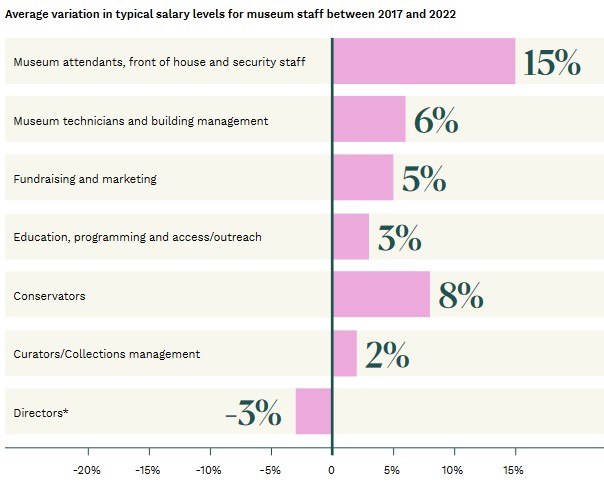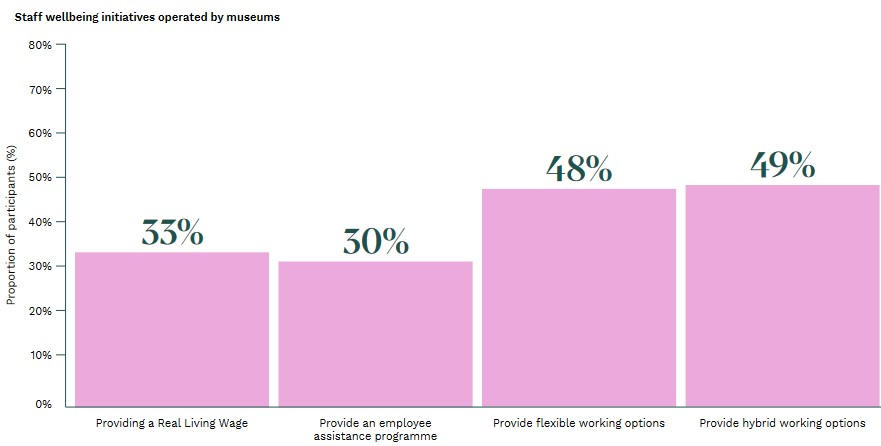Enjoy this article?
This area of Museums Journal is normally just for members. Join the MA to get full access to the latest thinking and trends from across the sector, case studies and best practice advice.

Earlier this month, the Museums Association (MA) published its Salary Research and Recommendations 2022, which analyse current pay levels across the UK museum sector.
Based on an independent survey conducted by Incomes Data Research, which gathered responses from 173 museums, the report is intended as a practical document to be used when setting starting salaries for museum posts. In a sector where low pay is endemic, it can also be used as an advocacy tool to highlight the serious implications of this to policymakers and funders.
The survey follows on the heels of similar research published this year by bodies such as the union Prospect and the Institute of Conservation, which both found that heritage and conservation professionals have suffered disproportionately steep falls in their earnings over the past decade or more. The MA’s figures echo these findings, showing that years of pay freezes and budget cuts across the sector have had a severe impact on the earnings of museum employees.
The MA’s previous salary guidelines were published in 2017, before Brexit, the Covid pandemic and the current cost of living crisis. At that time, the survey found that pay in museums lagged on average 7% behind that for comparable work in the public, private and not-for-profit sectors. Museum technician and curatorial roles saw the biggest gaps, at an average of 12% below the market median for equivalent positions in other sectors.
So has anything changed in the past five years? The research shows that it has, but unfortunately not for the better. Pay rates across the museum “job families” identified in the report have fallen on average 10% behind workers in comparable roles, with the discrepancy particularly large for conservators (17% on average below their equivalent), directors (16%), museum technicians and building management, and fundraising or marketing roles (both 14%).

The exception is the front-of-house, museum attendant and security category, which the survey found is now paid an average of 12% more than the market median. This category has typically seen wages increase by 15% in the past five years, a rise that may be partly down to the introduction of the National Living Wage in 2016. Although positive news, the increase built on a low baseline and this job family remains the lowest paid in the sector. It was among the most vulnerable to redundancy during Covid, and opportunities for progression remain poor.
This area of Museums Journal is normally just for members. Join the MA to get full access to the latest thinking and trends from across the sector, case studies and best practice advice.
Campaigns for fair remuneration for lower-paid employees appear to be having some impact. A third of this year’s respondents said they had signed up to pay the voluntary Real Living Wage, which is set by the Living Wage Foundation and based on what people need to live. In September, in response to soaring inflation, the foundation announced its biggest ever annual increase, two months earlier than planned: the rate now stands at £10.90 an hour in the UK and £11.95 in London.
Although still lagging behind their peers, some other museum “job families” have seen average pay scales rise in the past five years. Wages for experienced conservation professionals have typically risen by 8% since 2017, while pay in the museum technician and building management category is up 6%.

While these developments offer some encouragement, rising inflation means employees may see little benefit. The research showed that median salaries in the 2022 survey have failed to keep pace with inflation and are on average 16% lower than median salaries in the MA’s 2017 survey uprated by the Consumer Prices Index (CPI).
If salaries had kept pace with the CPI, the median salary for an education job at managerial level figure would have risen to £44,136 in 2021-22 – instead, the current median is just £39,267. A typical salary for the curator and collections management category rising in line with CPI would now be £45,721; instead, it is £39,174.
Depressed wages are stripping the museum workforce of skills and knowledge, and pricing talented people out of the sector. This has worrying implications for diversity and inclusion, with staff from ethnically diverse or low-income backgrounds already poorly represented in the sector.
It’s time for museum workers to get the recognition they deserve
We often say that people make museums and galleries, and it’s true – all the people who work in and with our institutions are essential to creating the amazing, life-changing experiences that we deliver for communities all over the UK.
But we also know that we are a poorly paid sector and that museum and gallery workers often don’t get the recognition and reward they deserve.
This research by the Museums Association (MA) shows that years of pay freezes and budget cuts have had a severe impact on the living standards of museum workers.
The Covid-19 pandemic and now the cost of living crisis have taken a huge toll on wellbeing and pay; as a historically underpaid sector we are falling further behind as inflation hits double digits and the cost of essentials soars.
This has an impact on individuals and institutions. Our recent wellbeing survey showed that while people who work in museums generally have good life satisfaction, the opposite is true when it comes to work satisfaction.
For institutions, low pay and employment insecurity mean that talented and experienced staff are leaving the sector and we are facing a recruitment crisis.
This also has an impact on the diversity of the sector, with low pay and poor terms and conditions putting off people from ethnically diverse or low-income backgrounds.
The MA is making clear recommendations that employers should aim to pay in the upper quartile of the salary ranges outlined in the report; that all workers, regardless of contract type, should receive at least the Real Living Wage, which is calculated according to what people actually need to live on; and that all employers should work with trade unions, staff and others to develop progressive working policies and terms and conditions.
Museums need a workforce that represents their communities and is respected and fairly rewarded.
I hope these salary recommendations will encourage employers, funders and stakeholders to be brave and progressive, and to respect and reward the hard work, knowledge and experience of our museum and gallery workforce.
Sharon Heal is the director of the Museums Association
Organisations are reporting increasing problems with recruitment as they struggle to compete with other sectors. More than half of respondents (52%) were having difficulty recruiting across some or all job groups.
The survey showed that these challenges are growing, with 43% of respondents reporting that recruitment issues have worsened recently, and almost a quarter (22%) saying they are having greater difficulty retaining staff.
“There is a lack of candidates with the right experience, and we are unable to compete with salaries at other organisations,” reported one museum.
While the implications of this brain drain are worrying for the future of the sector, the impacts of low wages on the staff themselves are even more concerning. According to the union Prospect, some museum workers are already using food banks to supplement low wages. The cost of living and energy crises, which have seen inflation rates spiral by almost 11% this year, will exacerbate these issues. The sad truth is that this winter there will be museum colleagues who cannot afford to heat their homes.
Some of the issues with pay are deeply rooted and may be difficult to overcome without significant structural change to the sector’s funding model – an outcome that the MA, alongside other sector organisations, is continuing to fight for. But that doesn’t mean the current challenges are intractable. There are many steps organisations can take to make the case for better pay, as well as boosting employee wellbeing and living standards in other ways.

As advocacy continues for broader structural change, the MA hopes the research and recommendations will be an effective tool to help staff and unions fight for change.
The report strongly recommends that employers and funders pay in the upper quartile of the salary ranges outlined in the document.
“We are encouraging people to pay at the upper level to affect a positive shift,”, says Tamsin Russell, the MA’s workforce development officer. Russell also advises organisations to develop fair recruitment practices, such as advertising for specific knowledge or skills rather than blanket qualifications. “We encourage looking at expertise and competence rather than qualifications,” she says.
Museums outsourcing jobs should make sure that those workers are also paid fairly, adds Russell: “Museums should ensure that third-party workforce suppliers are treating their workforce well and paying them in line with the Real Living Wage, as a minimum.”
It is only thanks to the workforce that museums have been able to serve their communities over the past few years, while dealing with crises on multiple fronts. The vital contribution of those workers must be properly rewarded.
The Museums Association’s recommendations
- That employers and funders use the upper quartile of salary ranges to set salaries, regardless of the size, type or location of their institution.
- That employers and funders should not use the lower quartile ranges to set pay rates.
- That all workers, regardless of contract type or hours of work, should at a minimum be paid the Real Living Wage set by the Living Wage Foundation, which is calculated annually based on what people need to live.
- That organisations work with trade unions and staff to develop progressive working policies, terms and conditions.
- That employers embed fair and inclusive recruitment practices, ensuring that job specifications are based on competence and knowledge, and that formal qualifications are sought only where necessary for the role.
- That employers and funders consider the recruitment, remuneration and wellbeing of the workforce in a holistic way.
- That employers set aside budget for staff wellbeing initiatives and listen to and act on staff and freelance concerns in this area.
- That funders use the report to assess whether applicants for funding are paying fairly and have best practice workforce policies in place.
- That museums respect and value freelancers as a core part of the sector workforce, pay them on or ahead of time, and pay fairly.
Developing ways of working
The survey found that many museums are developing progressive working policies; respondents cited job share arrangements, annualised hours contracts (where employees work an agreed number of hours per year rather than per week or month) and carers’ leave, as well as other benefits.
“We have a budgetary line for wellbeing,” said one respondent. “This includes payment for counselling sessions for staff diagnosed with anxiety, depression, or work-related stress.”
The Covid pandemic brought with it a sea change in working models, making measures such as flexible working hours and hybrid working much more widespread – although it must be recognised that not every employee is able to benefit from these changes. The survey showed that 48% of museum respondents now provide flexible working options and 49% offer hybrid working.
Further analysis by Incomes Data Research shows that, despite some challenges, hybrid working offers overwhelmingly positive benefits, with 93% of employers saying it has improved work-life balance, 84% reporting improved recruitment and retention, and 63% reporting benefits to health and wellbeing.
This area of Museums Journal is normally just for members. Join the MA to get full access to the latest thinking and trends from across the sector, case studies and best practice advice.